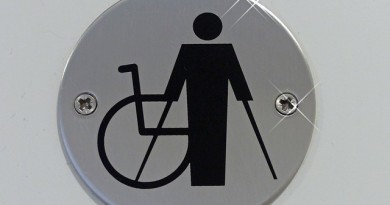How Much Does Term Life Insurance Cost?
A term life insurance policy is one that provides coverage for a limited period of time at a fixed payment rate. Should the policy holder survive the term of the policy, he or she must then obtain further life insurance coverage. Should the policy holder die during the term of the policy, then the benefit is paid out to the policy’s beneficiaries. Cheap term life insurance is considered the most economical way to obtain a sizeable death benefit. There is no cash value to a term life insurance policy as there is with a whole life policy, and it is not used for estate planning purposes.
Rates for term life insurance vary according to the length of the term on the policy – the longer the term, the lower the rate. These policies are relatively inexpensive because they have such a low likelihood of paying out.
Short Term Life Insurance
Term life insurance policies are available with terms as short as five years. There are also policies available that are annual renewable policies. This policy is based on the likelihood that the policy holder will pass during that year. Annual renewable term policies can be continued every year for a determined amount of years. Term life insurance cost increases every year that the policy is renewed as the premium is raised. A 5 year term would keep the same premium rate for the entire term of the policy, and is often renewable after the expiration of the term depending on results of a medical examination to determine insurability.
10 Year Term Life Insurance
A 10 year term life policy is generally used for people who have a specific need for short term life insurance. It is often used by business people to cover outstanding debt. These 10 year policies have a fixed premium and payout for the duration of the 10 year term. As with the short term policies, this one is generally renewable at the end pending a medical examination. With each renewal term life insurance cost will increase as renewal will come with an increase in the premiums to be paid. Because term life policies get more expensive as the policy holder gets older, they can be more expensive in the long run than a cash value insurance policy.
20 Year Term Life Insurance
The 20 year term life insurance policy is one of the most popular. It works both for families who are just starting out and for business people. The monthly premiums for 20 year term policies get more expensive as the prospective policy holder gets older. For a $500,000 policy for a term of 20 years, a 30 year old healthy male non-smoker will be able to cover term life insurance cost at the rate of about $30 a month. For a 40 year old, the premiums for a 20 year term policy grow to $40 a month. For a 50 year old, the cost of term life insurance is even higher as premiums jump up as high as $90 a month.
30 Year Term Life Insurance
The 30 year term life insurance policy is an excellent choice among the term life policies. Term life insurance cost is more here as monthly premiums are higher than for a short term policy, but over the long run a 30 year term policy will cost less than three successive 10 year policies. Changes in health status and lifestyle can drastically affect the premiums upon renewal of a shorter term policy. Smoking and obesity are two factors that can drive up the premiums by as much as 500%. Taking this into consideration, the 30 year term might be a better option for you, depending on your risk factors.
Renewable Term Life Insurance
Renewable policies continue the coverage of an original term policy, usually for the same length of time as the previous policy. Should a term life policy expire, a medical examination will be required to determine insurability prior to the issuance of the policy. With a renewable term life insurance policy, this medical examination is not required. This means that a policy holder who develops a terminal or otherwise uninsurable condition during the term of the previous policy will not lose his or her life insurance coverage. With each renewal period, term life insurance cost will be more as the premiums will increase because the policy holder is getting older and the probability of death increases.
Term Life Insurance vs. Whole Life Insurance
Term life policies differ from whole life policies in some very significant ways. Premiums for a whole life policy remain fixed for the life of the policy holder, while the cost of term life insurance premiums increases with each new term. Initially, term premiums are less expensive. But in the long term, total premium pay out might be much higher than with a whole life policy.
What Is Term Life Insurance?
Term life insurance is an insurance policy that pays out a death benefit to a designated beneficiary should the policy holder die during the term of the policy. Term life policies are less expensive than whole life policies, as it has been shown that they pay out very rarely. Immediately upon expiration of the policy, the policy holder is no longer covered. For continued coverage, a new term policy must be purchased. Renewable policies can be renewed at the termination of the previous term. With each progressive term, the premiums increase as the probability that the policy holder will die during the term increases as well.
Joint Term Life Insurance
Joint term life insurance is one policy that covers more than one person. It is generally used to cover married couples in the event that one of them should die. The policy pays out upon the death of one of the policy holders, with the death benefit going to the surviving partner. It is important to note that this ends the policy, and the surviving partner is now not covered. Therefore, if children are involved it is best to also have individual term life policies for their benefit as well. Joint term life policies are slightly more expensive than individual policies because two people are covered.
Decreasing Term Life Insurance
Decreasing term life insurance coverage is most often used for mortgage protection. The name of the policy comes from the fact that the face value of the policy decreases over time as the mortgage is being paid off. The benefit of this insurance is that the balance of the mortgage will be paid off in the event of the death of the policy holder. Although the value of the policy decreases over time, the cost of term life insurance of this kind will remain consistent as premiums remain the same. Some veterans’ programs offer these policies starting at the term life insurance cost of $10 a month. These policies are most often sold by mortgage companies.
- 770SHARES






